FOREWARNED ABOUT THE “IFFY” BUS SCHEDULE, we opted for a taxi for Bulguksa Temple Complex. It’s only about 20 kilometers from our hotel but I refilled my billfold with won anyway. I can’t speak for Buddha but Confucius say “Better safe than sorry.” Noticing the puzzled look on his face when we told him where we wanted to go, Connie showed the driver her phone with the Korean characters for Bulguksa and we were off.
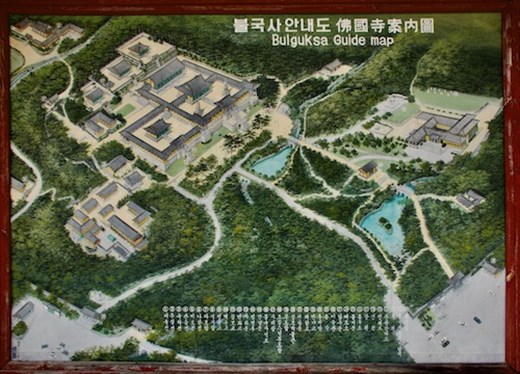
Bulguksa Temple Complex—Just a shadow of it's former self
Originally built in the 8th Century on the site of an even earlier foundation, today’s restored Bulguksa is a fraction of what it was in its glory days. Even after numerous restorations it is considered one of the finest complexes dedicated to the Buddhism in South Korea and is a UNESCO World Heritage Site.
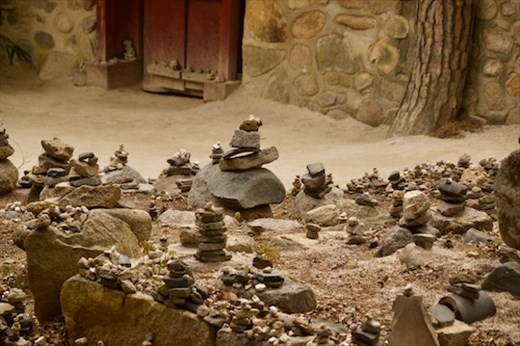
Meditation Pyramids—bring your own pebbles

Even non-Buddhists hedge their bets—reincarnation can be a bitch
Fewer than one-quarter of South Koreans are Buddhist—we saw only one woman praying, walking in a clockwise circle around the Dabotap Pagoda—yet the Complex was packed today. Bulguksa isn’t a place for meditation, even on a “school day.” And even the non-believers hedge their bets by attaching their prayers to Prayer Lanterns around the Temple. Others leave small meditation pyramids behind the temple made from small stones they must have had the foresight to bring with them.
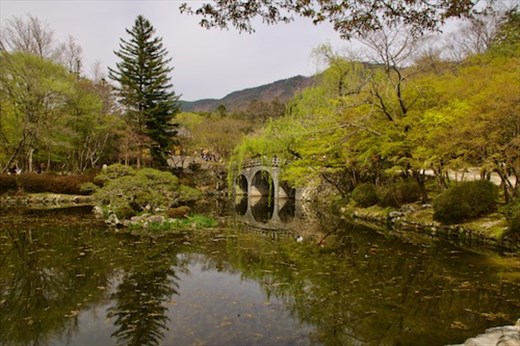
A bridge to cross on the path to Enlightenment
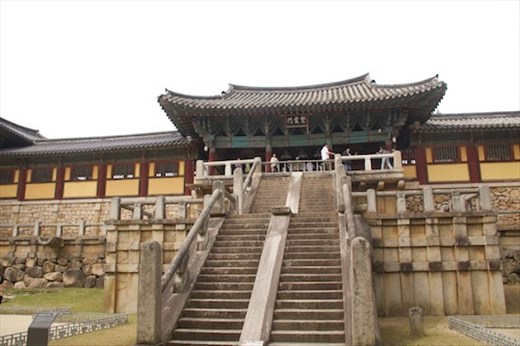
Thirty-three symbolic steps to Enlightenment

Guardians of the Gate
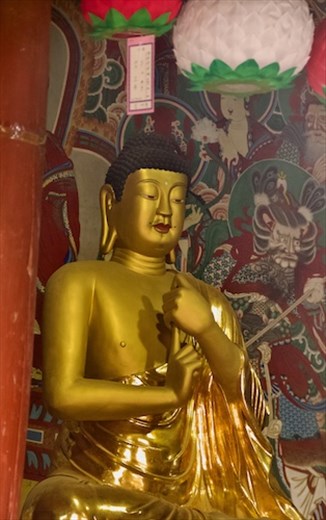
One of two images of Buddha
Buddhist believe there are many pathways to Enlightenment but at Bulguksa one first had to cross either the Lotus Flower or the Seven Treasures Bridge (now closed to pedestrians) before reaching the 33 Temple stairs, each representing a step to Enlightenment. And speaking of Enlightenment, the seated gilt-bronze Amitabha Buddha statue, one of two Buddha statues at Bulguksa, was probably cast around the year 900.
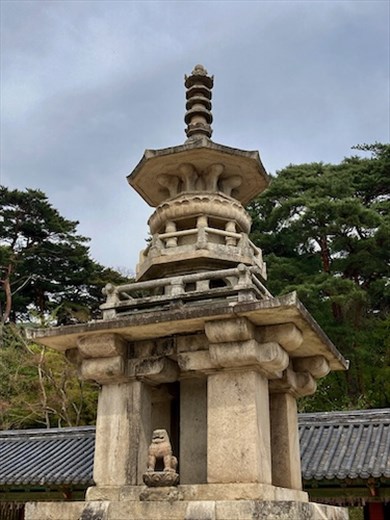
Dabotap Pagoda
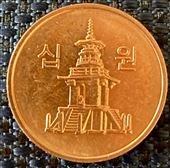
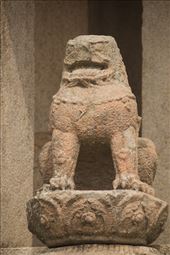
Pagoda image on ₩10 coin Little is known about the lions
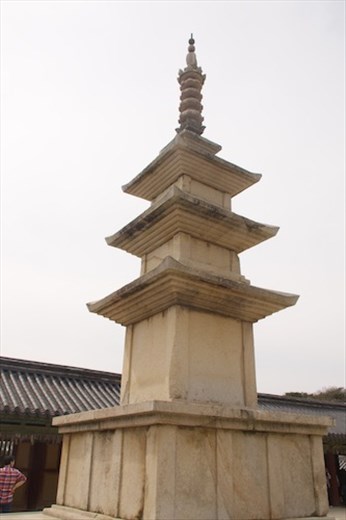
Pagoda that Casts No Shadow

Pagoda or Stupa, you decide
Bulguksa Temple has two pagodas, three if you count the weathered Sarira Stupa, which supposedly holds the remains of either eight priests or a queen—your call. Although the wooden Temple proper has undergone numerous incarnations and restorations, both the Dabotap and Seokgatap Pagodas are original, dating back to 751 CE. Dabotap, “Pagoda of Many Treasures” is the more ornate and has a stone lion at the top of one staircase—it may, or may not, once had four lions, one of which, may or may not, be in the British Museum. Dabotap Pagoda most definitely is featured on the ₩10 coin! Seokgatap, “Pagoda that Casts No Shadow” is a simpler design. Excavation around its base in 1966 revealed a reliquary casket containing the world's oldest woodblock-printed document, a copy of the Dharani sutra.
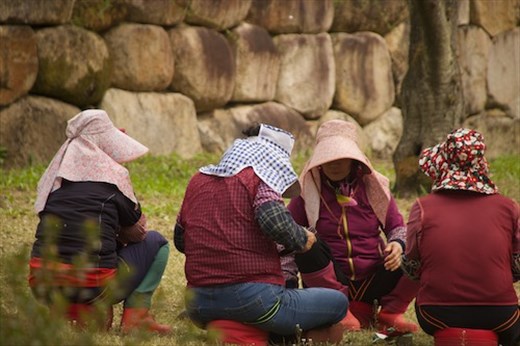
Korean ladies know about hats!
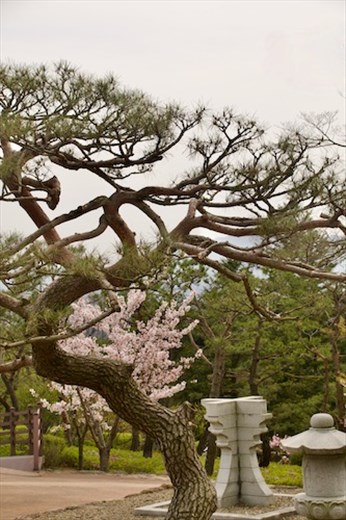
Last of the Cherry Blossoms

Kindred Spirits; old tree and old man
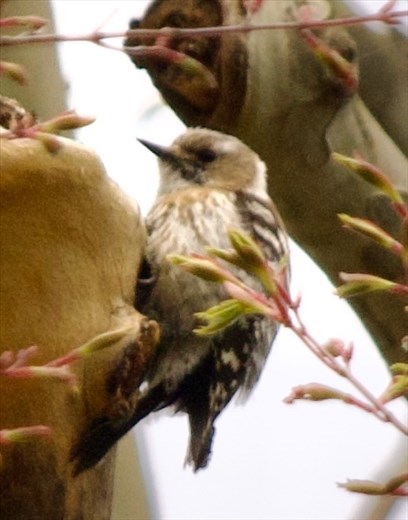
Of course there would be a bird! Japanese Pygmy Woodpecker
Enlightened but falling far short of Enlightenment, we wandered the grounds, dodging the visitors and generally feeling at peace, following the tapping of a woodpecker. Without even hanging a prayer lantern our prayers were answered—a taxi was waiting to take us home—a Hyundai EV, no less!

Cheomseongdae Observatory; oldest in Asia

Ancient Wolseong Burial Mounds, Gyeongju
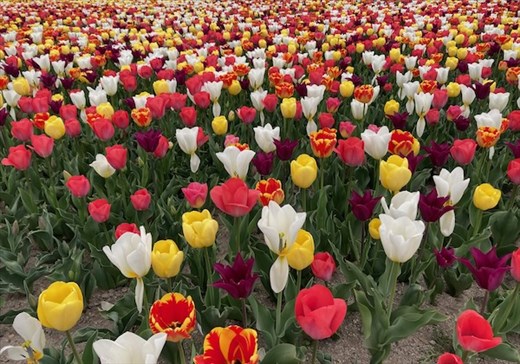
Lovely Tulips

Korean Kuties in native Kostume
Nearer to home the Cheomseongdae Observatory is the oldest astronomical observatory still standing in Asia according to the Gyeongju Chamber of Commerce. It is surrounded by dozens upon dozens of ancient burial mounds at the site of the former Wolseong Palace. Neither the observatory nor the non-existent palace are much to look at but the colorful tulips make up for it. Throw in some local lovelies in traditional costumes for flavor and it made for a nice afternoon walk.